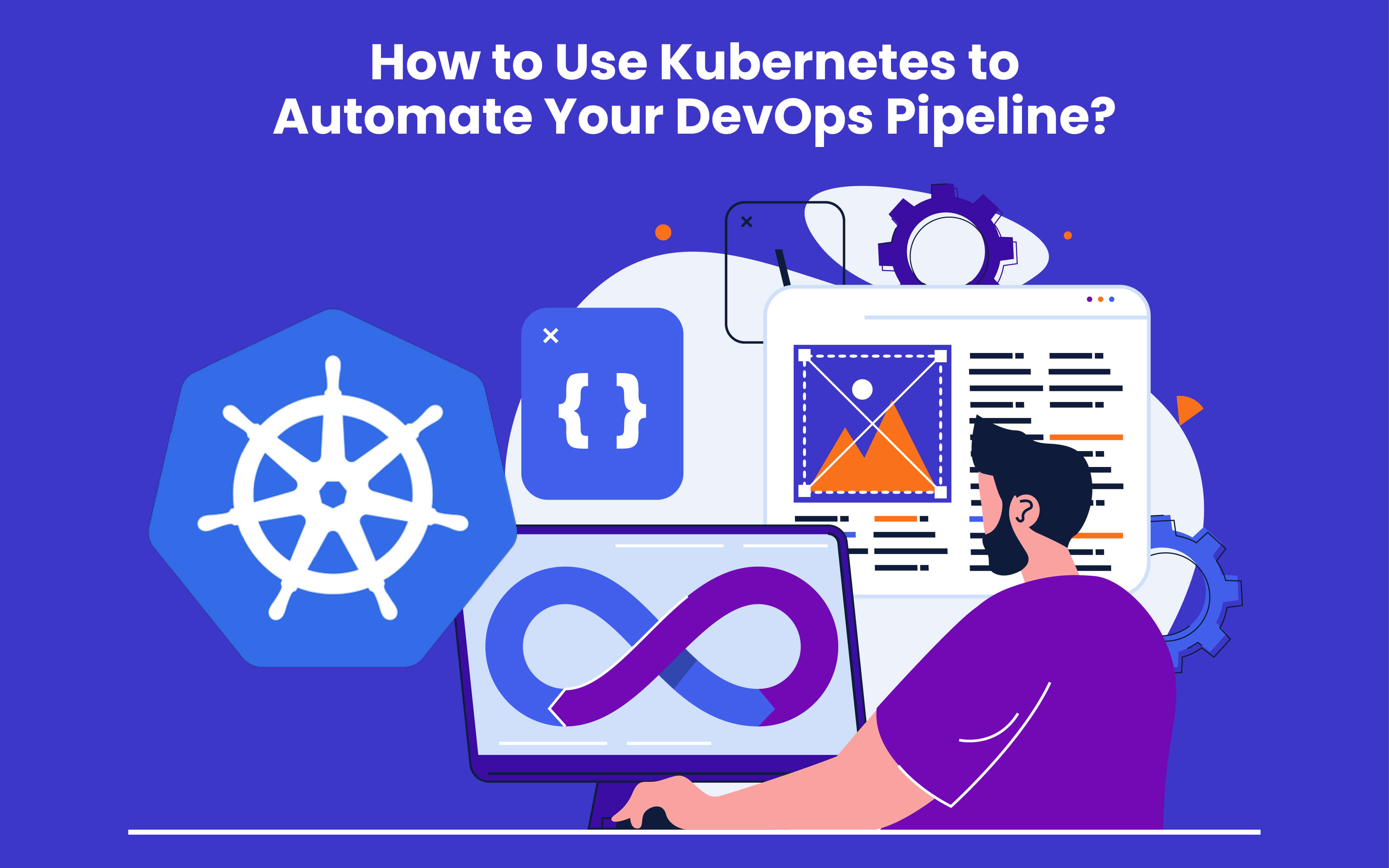Blogs
To know about all things Digitisation and Innovation read our blogs here.
DevOps
How to Use Kubernetes to Automate Your DevOps Pipeline?
SID Global Solutions
28 February 2023

Introduction
Kubernetes has become one of the most popular container orchestration platforms in the world. Its ability to automate the deployment, scaling, and management of containerized applications has made it a popular choice for many DevOps teams. One of the most significant benefits of using Kubernetes is that it enables you to automate your DevOps pipeline, which can improve the efficiency and reliability of your software delivery process. In this guide, we’ll take a deep dive into the process of using Kubernetes to automate your DevOps pipeline, covering everything from setting up your environment to deploying and managing your applications.
Also Read: Three Pillars of Digital Transformation: Governance, Culture, and Change Management
Setting Up Your Environment
Before you can begin automating your DevOps pipeline with Kubernetes, you’ll need to set up your environment. Here are the key steps you’ll need to follow:
- Install Kubernetes: If you haven’t already, you’ll need to install Kubernetes on your local machine or server. The easiest way to do this is to use a tool like kubeadm, which will automate the installation process for you.
- Set up a Kubernetes cluster: Once you have Kubernetes installed, you’ll need to set up a Kubernetes cluster. This involves creating a master node and one or more worker nodes. The master node is responsible for managing the cluster, while the worker nodes are responsible for running the containerized applications.
- Install Docker: To run containerized applications on your Kubernetes cluster, you’ll need to install Docker on each of your worker nodes. Docker is a containerization platform that enables you to package your application code and dependencies into a container that can be deployed anywhere.
- Install a CI/CD tool: To automate your DevOps pipeline, you’ll need to install a Continuous Integration/Continuous Deployment (CI/CD) tool. There are several popular options to choose from, including Jenkins, GitLab, and CircleCI.
Once you’ve completed these steps, you’ll have a fully functional Kubernetes environment that you can use to automate your DevOps pipeline.
Creating Your DevOps Pipeline
Now that your environment is set up, it’s time to start creating your DevOps pipeline. Here are the key steps you’ll need to follow:
- Create a Git repository: The first step in creating your DevOps pipeline is to create a Git repository for your application code. This will enable you to version control your code and collaborate with other team members.
- Write your application code: Once you have your Git repository set up, you’ll need to write your application code. You can write your code in any language, but it’s important to make sure that it’s containerized and can be deployed using Docker.
- Create a Dockerfile: To containerize your application code, you’ll need to create a Dockerfile. This file defines the environment that your application will run in and specifies the commands that need to be run to build the container.
- Build and test your Docker container: Once you have your Dockerfile set up, you can build your Docker container and test it locally to make sure that it’s working as expected.
- Push your Docker container to a container registry: Once you’ve tested your Docker container locally, you’ll need to push it to a container registry. This will enable you to deploy it to your Kubernetes cluster.
- Set up your CI/CD pipeline: With your Docker container pushed to a container registry, you can now set up your CI/CD pipeline. This will involve creating a pipeline in your chosen CI/CD tool that will automate the deployment of your application to your Kubernetes cluster.
Also Read: How to Implement Sustainable Digital Transformation in Public Services
Deploying and Managing Your Applications
With your DevOps pipeline set up, you can now deploy and manage your applications on your Kubernetes cluster. Here are the key steps you’ll need to follow:
- Deploy your application to your Kubernetes cluster: To deploy your application to your Kubernetes cluster, you’ll need to create a Kubernetes deployment manifest. This manifest defines the specifications for your deployment, including the container image to use, the number of replicas to run, and any environment variables that need to be set.
- Scale your deployment: Once your deployment is up and running, you can use Kubernetes to scale your application horizontally by increasing the number of replicas. This can be done manually or automatically, depending on your requirements.
- Monitor your application: To ensure that your application is running smoothly, it’s important to monitor it closely. Kubernetes provides several tools for monitoring, including metrics, logs, and alerts.
- Roll out updates: When you need to roll out updates to your application, you can use Kubernetes to perform a rolling update. This involves updating one replica at a time, while keeping the rest of the replicas running.
- Manage your application’s lifecycle: As your application evolves, you’ll need to manage its lifecycle. This can involve scaling up or down, updating the application code, or even decommissioning the application altogether.
Conclusion
By setting up a Kubernetes cluster, creating a DevOps pipeline, and deploying and managing your applications, you can improve the efficiency and reliability of your software delivery process. While there are many steps involved in this process, Kubernetes provides a powerful platform that can help you streamline your DevOps workflow and deliver software faster and more efficiently.
SID Global Solutions is a leading provider of digital transformation services, helping businesses to modernize and optimize their operations using the latest technologies. One of the key technologies that we use to help our clients is Kubernetes, which enables us to automate their DevOps pipelines and streamline their software delivery process.
Through our expertise in Kubernetes, we help our clients to deploy and manage their applications more efficiently and reliably, ensuring that their businesses run smoothly and effectively. By leveraging the power of Kubernetes, we enable our clients to scale their applications easily, monitor them closely, and roll out updates seamlessly, all while maintaining high levels of performance and reliability.
Also Read: Three Waves of Digital Transformation: What You Need to Know to Stay Ahead
With the help of Kubernetes, SID Global Solutions is able to transform our clients’ businesses by digitizing their operations, improving their agility and responsiveness, and reducing their costs and risks. By partnering with us, businesses can be assured that they are leveraging the latest technologies to achieve their goals, and that they are well-positioned to succeed in today’s rapidly evolving digital landscape.









